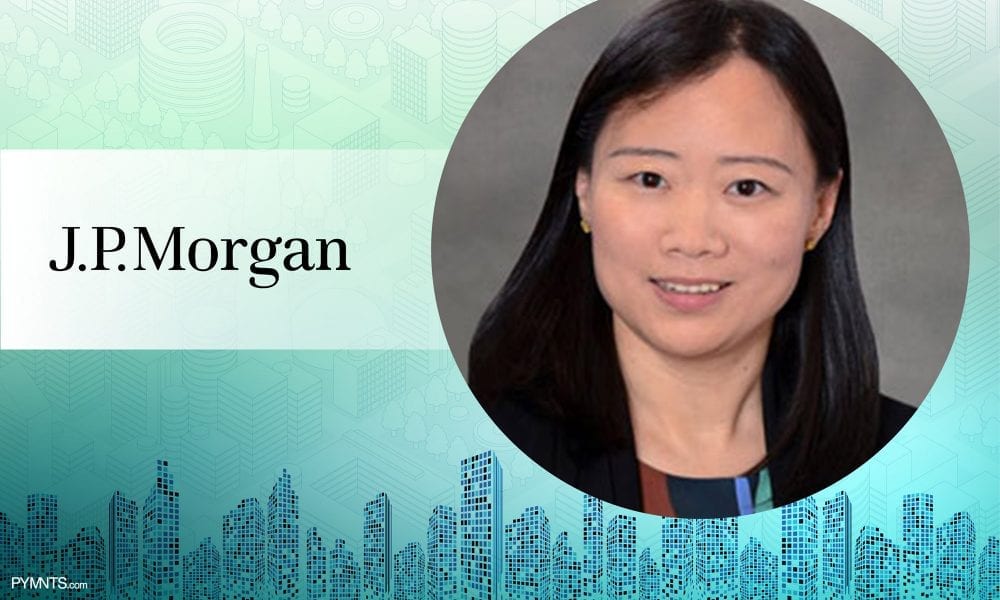摘要: Lia Cao, global head of wholesale payments solutions, J.P. Morgan, believes that in the post-pandemic economy, there is no room for legacy payment models. "Business transformation is an inevitability in the upcoming environment, and payments now needs to be in lockstep, every step of the way," she says in The Connected Economy’s Power Source – CEO Edition.

▲圖片標題(來源:pymnts.com)
The pandemic-induced impacts of 2020 were just the start of a one-way street for digitized treasuries and payment models — and there is no way back to legacy models.
The past year was a watershed moment in the global connected economy, as estimates suggest that the adoption of digital technologies has accelerated by seven years. For a sense of the potential long-term impact on payments, look to previous public health crises: The MERS outbreak in 2015 advanced Korea’s eCommerce economy, and SARS accelerated digital adoption in China and Hong Kong in 2002. These markets were forced to evolve to survive, becoming digital forerunners.
The Great Business Model Shake-Up
2020 forced many businesses to quickly pivot, and this will continue moving forward. More than 60 percent of our clients globally told us that enabling business model shifts was their top treasury priority for 2021. We have identified three critical existing models that are experiencing rapid uptake, and two emerging models.
The recurring revenue model is commonplace — just look at Netflix. B2B is now adopting this model, too, as evidenced by the growth of infrastructure-as-a-service such as Google Cloud and Amazon EC2. Our clients are pivoting to recurring revenue models to unlock new revenue streams and tap into new sectors.
Super apps like WeChat are part of the fabric of society in many Asian countries. But this single platform ecosystem model is also rising in North and Latin America for B2B and B2C. Payments are often used as the single connecting infrastructure across the ecosystem to amplify loyalty for all parties on the network.
The D2C model took hold in 2020. It was initially a band-aid pivot, but there is now strong evidence of businesses adopting this model as a long-term strategy, overhauling their payments and liquidity management processes to accommodate new flows.
With the explosive growth in eCommerce, two new models are emerging: contextual commerce in which purchases are made while the consumer is doing an activity, and sharing economy models, such as ridesharing, home lending or peer-to-peer lending. Both models are currently popular in specific segments, but are expected to grow quickly as consumers become more accustomed to engaging with businesses digitally.
Payments are the connective tissue that is vital to enabling these business models, but businesses also need to consider how their associated processes and infrastructure must transform to enable these pivots.
In 2021, The Case For Digitization Is Undeniable
As payments come under the spotlight as a revenue driver and lever for strategic business model pivots, legacy processes and infrastructures became liabilities. Consequently, end-to-end digitization of payments is now a “must-have” strategic imperative for everyone — from the board to executives to treasurers.
And businesses must act fast. In 2020, business survival depended on adopting digital processes in a matter of days, not months or years. Moving forward, being able to onboard consumer payments or process vital sales documents without a wet-ink signature can become the difference between growing or losing business.
Treasury and payments now need to be part of the conversation to ensure understanding of the implications of business strategies. As the pace of business change accelerates, treasury needs to be just as agile and flexible. Business transformation is an inevitability in the upcoming environment, and payments now needs to be in lockstep, every step of the way.
轉貼自: pymnts.com
若喜歡本文,請關注我們的臉書 Please Like our Facebook Page: Big Data In Finance


留下你的回應
以訪客張貼回應